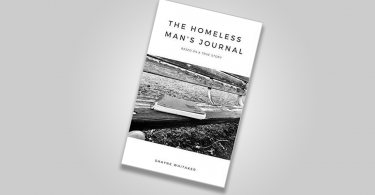Everyone always tells you: “never judge a book by its cover.” It’s a shame as the cover of The Bone Clocks is utterly beautiful, swirling, delicate illustrations whi
Everyone always tells you: “never judge a book by its cover.” It’s a shame as the cover of The Bone Clocks is utterly beautiful, swirling, delicate illustrations which hint at the fantastical and engaging story within.
Likeable and worth a chance
The prose is at once gentle and powerful, fantasy elements grounded in cosy, relatable reality, written in approachable yet intelligent language. It’s everything you want it to be – unique, quirky and laden with symbolism and patterns but without pretensions or a patronising tone.
Mitchell’s first priority is to entertain the reader and his books are as likeable as the man himself.
The premise of the novel might put off potential readers, particularly those who know Mitchell’s work through his more “reality” based books, such as Black Swan Green and The Thousand Autumns of Jacob De Zoet.
You shouldn’t let the combination of fantasy and actuality phase you, though. The clashing sensations merge perfectly together, the bubble of urban poetry spilling into the celestial chorus of the sublime – ominous cults, dripping in religious iconography, blended with sex, cocaine and class war.
There’s a wry self-deprecation – attacking the “fantasy sub-plot [that] clashes so violently with the book’s State of the World pretensions.”
Read attentively
With subtle, shifting themes that thread together throughout the novel, the novel dredges up names, faces and places scattered throughout Mitchell’s entire back catalogue, reveal ing themselves to attentive fans as rewards for reading so closely.
Mitchell’s novels are never alone in their story world and it pays to read all his work to get a deeper understanding of the patterns. If you think about it, it’s a pretty good marketing technique.
Yes, there are whole sections filled with esoteric phrasings that even those of us with a philosophy degree struggle to understand, but it’s never Mitchell’s ambition to show off about his intelligence, he just uses the language to fit the story.
Whether it’s Holly’s Irish-by-way-of-Gravesend gravel or Crispin’s pompous, declining-school-master tone, it’s a mark of how alive the characters are that the writer has almost no control over the language they use. Rather, it’s inherent in their backstory.
Universal, despite blazing ambition
Mitchell predicts the future with frightening accuracy: the storm flooded subway stations, nations decimated by an Ebola outbreak or drowned by rising tides, a creeping apocalypse which is too deeply based in reality to ignore, leaving us with a final chapter that upsets and terrifies us about the way we live with an aching sadness and frustration for Holly.
The answers unravel slowly, keeping us guessing although there is little chance of the reader deciphering the Faustian, emotional whirlpool before Mitchell decides it’s time.
We need every little clue he decides to drop in before we can begin to see the magnificent scale of the book, it is grander in scale than even Cloud Atlas. It’s a novel with blazing ambition, but his use of character and language, humanity and normality will appeal to everyone. This is one of Mitchell’s greatest skills as a writer.
This is Mitchell’s third listing for the Man Booker prize, which he sarcastically sends up within the novel. Comparing it to his two previous shortlists, Number9Dream and Cloud Atlas, you can see The Bone Clocks has the same detailed examination of humanity, laid over a sprawling backdrop of war, technology, myth and indoctrination.
Whether or not it wins the prize, it is a book everyone should read.
Image: Mariusz Kubik/Wikimedia Commons








